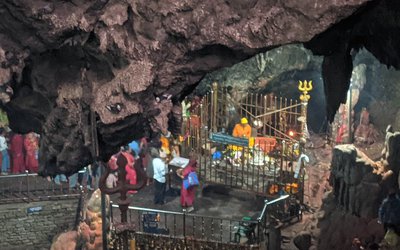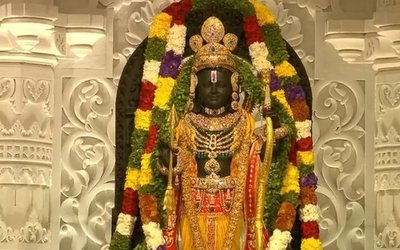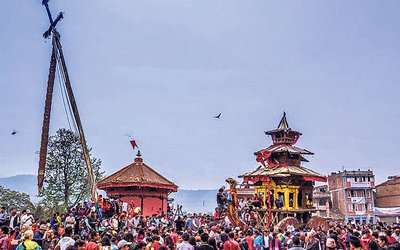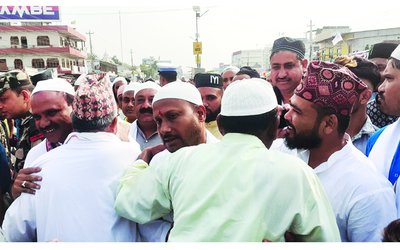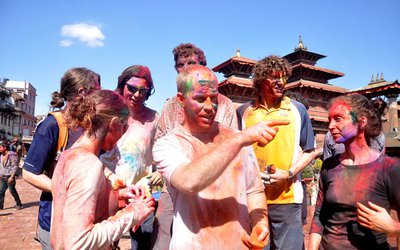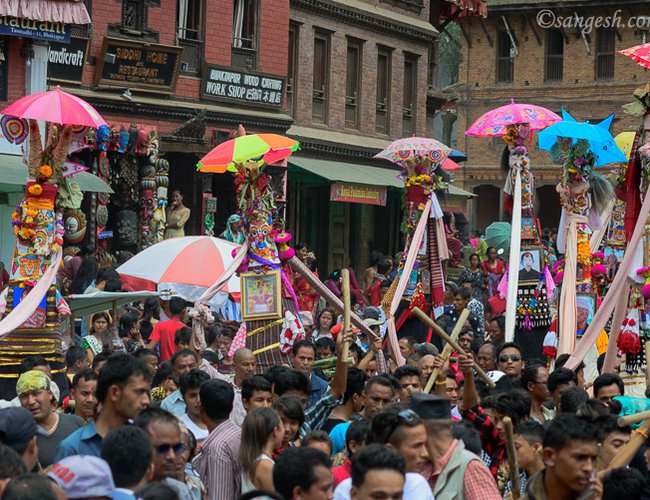
Gai Jatra is a festival of dancing, singing, mirth and laughter. The festival of cow is celebrated in the Kathmandu Valley to commemorate the death of loved ones. As part of the festival family members of the deceased of the past year send people mostly children. dressed as cows to parade on the streets.The festival usually falls in July or August.
Gai Jatra is a time to remember lost ones and also to ease the pain. The word "Gai" mans cow in English. Cow is regarded as the goddess of wealth in the Hindu religion. Sharing of sorrow and taking the comfort in knowing that their lost ones are safe is the true reason for celebrating this festival.
The day is also marked with a gay parade along with many people dressed is weird clothes. In Bhaktapur, the festival lasts for eight days. The origin of this celebration goes back to the reign of the Malla rulers. It is said that the Malla Queen was in mourning for a long time after the untimely death of her son. The king in an attempt to console her asked every family that lost a loved one to come out in a procession to show the queen that she was not alone with her suffering. That is why there is much joy and joking during the procession that goes through the streets.
Saya, or Gai Jatra, is a joyous festival of the Kathmandu Valley that celebrates cows and the impending abundance of the harvest season. Jatra in the Nepali language means “street festival” making the celebration of Gai Jatra a public and community affair.
Like many of the other jatras celebrated throughout the year, Gai Jatra contains lively costumed street processions that move through the centers of the old cities of the Valley. It is celebrated during the middle of the monsoons when Newars replant their rice—this year occurring in late August. In addition to agrarian cycles, Gai Jatra also honors the dead. According to local beliefs, it is the one day that souls can enter into the world of the dead without having to go through the suffering of multiple rebirths. Cows actually help guide the soul of the deceased to heaven.
Honoring the dead: Cows as guides
Because cows are believed to guide souls, during Gai Jatra, anyone that has had a family member pass away is supposed to lead a calf during the procession. However since many families cannot afford a calf, most dress a child in a cow mask as a substitute, and these children walk in the procession instead. Newars will also create cow effigies out of bamboo to parade around.
Gai Jatra and the monsoon season
Despite the solemn theme, Gai Jatra is a grand celebration full of merrymaking and fun. After the procession has concluded, the rest of the day is filled with street performances of dances, plays, and comedic routines—making it an incredibly light-hearted affair. Decorations and costumes are an important part of the day. Like the art objects in our current exhibition, Nepalese Seasons, these decorative creations for Gai Jatra are largely influenced by the monsoon cycles. However, these creations are intended to be temporary and are remade every year for each new festival, so visitors won’t find any items made during Gai Jatra in the Museum
Connecting the festival to the end of the monsoons, some Newars will wear a sacred thread on their wrists that will then be removed during the Lakshmi festival about two months later. Once the Lakshmi festival comes, they will take the thread and tie it to a cow’s tail as a blessing.
- Japanese Ambassador Kikuta And DPM Shrestha Shared The Views to Deepen Nepal-Japan Bilateral Relations
- Apr 19, 2024
- India Provides Financial Support To Build A School Building In Darchula
- Apr 19, 2024
- Shalom Club-Nepal Expresses Solidarity With Israel Against Iran-attack
- Apr 19, 2024
- Foreign Secretary Lamsal Urged Bangladeshi To Explore Investment Opportunities In Nepal
- Apr 19, 2024
- Nepal Should Get Compensation For Damaged Caused By Climate Change: Minister Pun
- Apr 19, 2024

